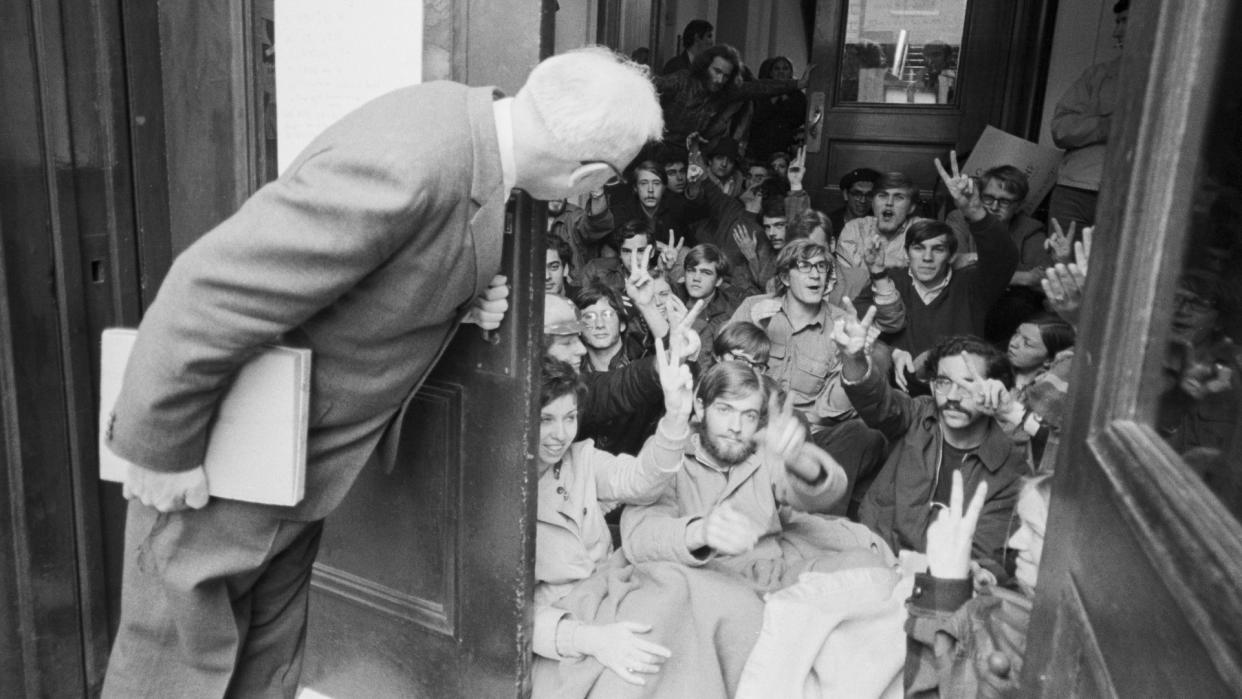A history of student protest at Columbia University

Police in riot gear raided Columbia University in New York City last night, arresting dozens of pro-Palestinian protesters encamped in a university building.
Students at the Ivy League institution in Manhattan had been occupying the Hamilton Hall building, protesting against Israel's war in Gaza and fuelling a wave of similar campus demonstrations across the US. But tensions have "reached boiling point", with hundreds of protesters arrested at multiple universities over the past week, said Sky News.
On Monday Columbia University said it had started suspending students who disregarded orders to leave the encampment, amid accusations of antisemitism and threats to Jewish students. On Tuesday, Columbia's president said she had "no choice" but to call in the New York Police Department to remove the protesters, exactly 56 years to the day after the same police department "violently cleared" a 1968 student occupation of the university, said The New York Times.
The demonstration and arrests "aren't new ground" at the university, said The Associated Press. They're the latest in "a Columbia tradition" dating back more than five decades – a tradition that "helped provide inspiration" for anti-apartheid protests, Iraq war protests, and more.
The 1968 Vietnam War and civil rights protest
On 23 April 1968, Columbia students began protesting at the US's role in the Vietnam War and "university policies they considered racist", said The Washington Post.
They demanded an end to the university's "affiliation" with a think tank involved in Pentagon weapons research. They also wanted to halt plans for a "segregated gym" in a nearby park, that was thought to have separate entrances for Columbia students and Harlem residents. The arrangement "struck many as a reminder of Jim Crow", said the paper. Students seized five buildings, while "hundreds of others" camped outside on the campus.
On 30 April, at the behest of Columbia's president, about 1,000 New York City police officers "poured onto the campus" to clear out the demonstrators. Police – some on horseback – "used their nightsticks". They also used "force" against the crowds (a mixture of onlookers and supporters of the "siege").
Students were "punched with brass knuckles, kicked, dragged down concrete steps, thrown to the ground and then stomped upon by the police", student publication Barnard Magazine reported at the time. More than 100 people were injured, and nearly 700 arrested.
Thousands of students and faculty members were "upset" by the university's use of what they considered "excessive force", said the Post.
But by another metric, the protests were successful: Columbia disaffiliated from the weapons think tank, the Institute for Defense Analyses, and scrapped the plans for the gym.
The 1985 anti-apartheid protests
In April 1985, 100 to 200 students "blockaded" Hamilton Hall for three weeks, demanding that the university "divest" from corporations profiting from apartheid in South Africa, said Al Jazeera. They renamed the building "Mandela Hall", in honour of the South African liberation leader and later president, Nelson Mandela.
The students were led by the multiracial organisation Coalition for a Free South Africa, which planned the blockade for nearly two months, according to the Zinned Project. The protests ended on 25 April with a march into Harlem, and eventually led to "the first successful divestiture campaign" at Columbia, with the university agreeing to divest itself of the remainder of its investments with South African connections.
Ultimately, 155 universities divested from firms that supported or profited from South African apartheid, said Vox. In 1986, the US government also "bowed to pressure" and enacted a divestment policy.
"When you're going to Columbia, you know you're going to an institution which has an honoured place in the history of American protest," Mark Naison, professor of history and African American Studies at Fordham University, and a participant in the 1968 demonstrations, told AP News. "Whenever there is a movement, you know Columbia is going to be right there."